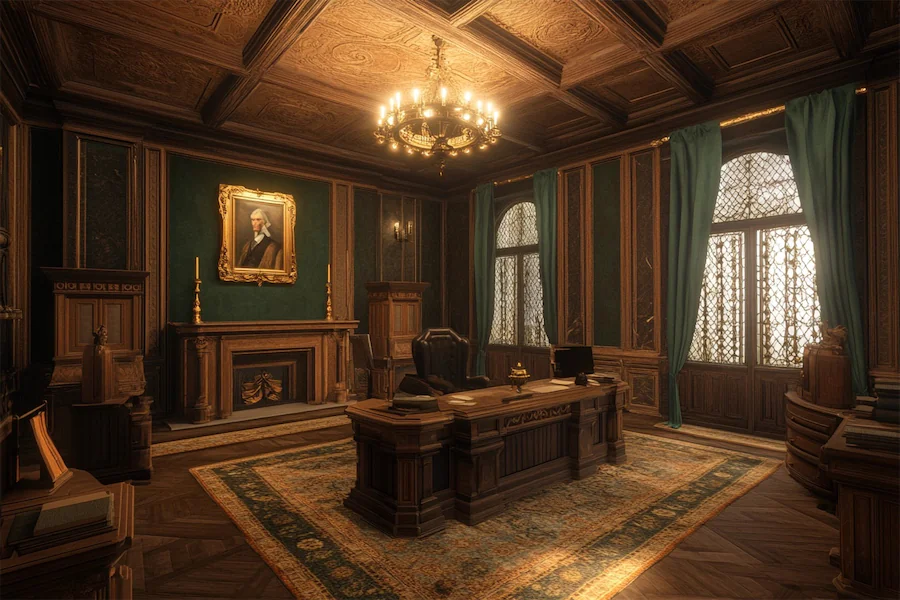A Neo-Renaissance office room embodies the grandeur and elegance of Renaissance Revival architecture, blending classical design elements with modern functionality to create a sophisticated workspace.
Introduction to Neo-Renaissance Office Rooms
Neo-Renaissance design draws inspiration from the architectural styles of 15th and 16th-century Europe, characterized by symmetry, proportion, and the use of classical elements such as columns, arches, and decorative motifs. In an office setting, this style conveys a sense of timelessness and authority, making it suitable for professional environments that value tradition and elegance.
History and Origins of Neo-Renaissance Office Rooms
The Neo-Renaissance movement emerged in the 19th century as part of a broader trend of reviving classical architectural styles. Architects and designers sought to emulate the harmony and grandeur of Renaissance architecture, leading to the incorporation of its elements into various building types, including governmental and institutional structures. Incorporating Neo-Renaissance design into office interiors reflects a desire to convey stability, permanence, and cultural refinement.
Key Features of Neo-Renaissance Office Rooms
- Classical Architectural Elements: Inclusion of columns, pilasters, and arches to evoke the grandeur of Renaissance architecture.
- Ornate Furniture: Use of elaborately carved desks, chairs, and bookcases, often featuring motifs like acanthus leaves and scrolls.
- Rich Materials: Application of luxurious materials such as dark woods, marble, and fine textiles to convey opulence.
- Decorative Ceilings: Implementation of coffered or intricately detailed ceilings to add depth and interest.
- Symmetry and Proportion: Adherence to balanced layouts and harmonious proportions, reflecting Renaissance principles.
Applications of Neo-Renaissance Office Rooms
This design style can be applied to various office settings:
- Executive Offices: Creating a dignified and authoritative environment suitable for high-level decision-makers.
- Law Firms: Establishing an atmosphere that conveys tradition, stability, and respect for classical ideals.
- Academic Institutions: Designing offices that reflect a commitment to cultural heritage and intellectual pursuit.
Considerations When Designing a Neo-Renaissance Office Room
- Authenticity: Use quality materials and craftsmanship to accurately reflect Renaissance aesthetics.
- Integration with Modern Technology: Thoughtfully incorporate contemporary office equipment in a way that complements the classical design elements.
- Lighting: Utilize a combination of natural light and period-appropriate fixtures to enhance the ambiance and highlight architectural details.
- Space Planning: Ensure that the room’s layout facilitates functionality while maintaining the formal symmetry characteristic of Neo-Renaissance design.
Conclusion
A Neo-Renaissance office room offers a distinguished and elegant workspace that combines classical design principles with modern functionality. By thoughtfully integrating key elements of Renaissance Revival architecture, one can create an environment that inspires productivity and reflects a deep appreciation for historical aesthetics.
